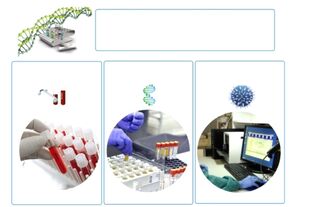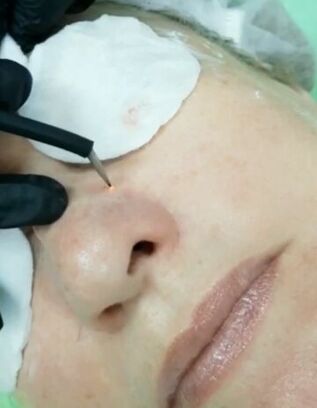
Papillomas need to be removed because they are not just cosmetic defects - they are benign (not always) tumors caused by HPV (BirusPapillomasChzperson).
Papillomas grow, are damaged during hygiene procedures, or become inflamed. The growths can be localized in different parts of the body. Genitals, internal organs, nasal mucosa, etc. These can be single and multiple rashes. They often resemble cauliflower.
They also change color - from transparent to deep brown.
There are many ways to treat papillomas and condylomas. In addition to the growths themselves, you also have to deal with the virus itself. Traditional medicine offers many recipes to get rid of growth, but their independent use is not recommended.
Causes of Occurrence
The main reason for the appearance of such formations is the defeat of the body by papillomavirus. It also spreads through sex and everyday life.
We can say that it is a disease. It affects people with weakened immunity, especially women.
So they often suffer from papillomas during and after childbirth, when sudden hormonal changes are detected in the body. Such rashes on the epidermis are more common after 30 years.

The source of the papilloma virus has not yet been pinpointed, so many (sometimes false) myths are circulating about it. Here are some of the dissolutions:
- Papillomasis a clear symptom of the onset of old age.According to statistics, such growth is more common in people after 30-35 years. So it has nothing to do with aging. This is more sensitive to overweight people - fat wrinkles create favorable conditions for papillomas due to sweating. Such bumps on the dermis are found in young people, even adolescents. In such cases, the cause is hereditary tendency.
- Papilloma is hard to confuse with something.This is not really the case. It is difficult to make an accurate diagnosis because moles, warts, mollusks, and other formations are often obscured by such a disease. The most common type of papilloma is keratoma (also a benign tumor with a specific orientation on the body: in women, underarms, neck, under the breast). Often, papillomas appear on the upper eyelid or groin.
It is better to remove papillomas in specialized clinics, although many proven folk remedies are used at home and allow the problem to be treated quickly.
It is strictly forbidden to tear them off on your own, which is life-threatening. In any case, you should first visit a dermatologist and have an examination to learn about the nature of the neoplasms.
HPV tests

There are more than 100 types of HPV, at least 13 of which lead to cancer (also known as high-risk viruses).
An HPV test is an examination of biological material taken from a patient. The analysis is positive if the pathogen is present in the body or negative if there is no viral load.
Test types:
- Polymerase chain reaction (PCR).This is a test that helps detect the presence of infection and monitor virus levels.
- Daigen test.The hybrid involves a method of attachment. It is based on the differentiation of papillomavirus according to the risk of developing oncology. It is rarely used as a single test, it is usually used in conjunction with other research methods.
- PAP test.Pap test is similar to classical cytology. Its purpose is to monitor the atypical cells of the epithelium, which can be used to determine malignant processes in the body.
Which doctor to go to
The easiest and cheapest way is to contact your nearest KVD. Private clinics are more expensive.
Don’t be afraid to see a doctor, let alone pick up something at the ambulance. Everything you need - you've already got it. Although there is a possibility of hereditary hpv.
- If the lesions are on the skin in the intimate area, consult a doctor -surgeonordermatovenerologist.
- If the lesions are located on the mucous membranes in the intimate area, consult a doctor -gynecologistor doctor -urologist.
Methods for removing papillomas

- Cauterization with salicylic acid.To avoid negative consequences, this should only be done by a professional.
- Surgery.Lesions are cut with a scalpel.
- Laser.This is an alternative to surgery. The method is less traumatic, even with the removal of large neoplasms.
- Cryodestruction.Allows you to burn papillomas quickly and effectively with liquid nitrogen. The only drawback of the method is that it is impossible to accurately calculate the nitrogen penetration depth. Therefore, several procedures may be required. In addition, there is no guarantee that papillomas will not reappear.
- Electrocoagulation.The essence of the technique is that the focus of the lesion is on high-precision, high-frequency electrical pulses. It is indicated for the removal of papillomas in any part of the body, but is not recommended for the face (high risk of scarring).
If you want to remove a few tiny papillomas and there are no medical contraindications, you can use any folk remedy. Only see a doctor first.
Pharmaceutical preparations
Surgical removal is not enough to get rid of papillomas. Medication is needed to eliminate the cause of the skin defects, the HPV virus.
Includes the use of:
- antiviral immunostimulatory drugs;
- vitamins;
- antiseptics, local cautery agents.
Doses and duration of treatment are determined by your doctor. Ignoring medication is the reason that the removal of skin growths leads to recurrence.
Folk remedies
Folk methods for removing papillomas offer a wide variety of recipes, including:
- using homemade gels and creams;
- herbal oil and juice based compresses;
- use of decoctions and infusions to strengthen the immune system;
- Binding growths with threads, etc.
Many of these techniques are controversial, so you should only use folk remedies for papillomas after consulting your doctor.
Celandin

Practice shows that an effective fight against papillomas is possible with a natural cure - celandine. The easiest way to use the plant is to lubricate the affected skin surface with freshly squeezed juice from the stems. The procedure is repeated 1-2 times a day until the neoplasm turns black and disappears.
For those who do not have the opportunity to remove the stems of a plant, a finished medicinal product is suitable.
HPV patients often use it to remove cosmetic blemishes. According to the instructions, the neoplasm should be evaporated, healthy skin should be smeared with cream, and a drop of medication should be applied to the protruding area. Burning and blackening indicate that the healing process is yielding results.
A third way to remove celandine papillomas is to make a homemade cream. The fresh stalks of the plant are rolled up in a meat grinder, then juice is squeezed through the cheesecloth and added to glycerin or baby cream in a ratio of 1: 4. With the resulting composition, the growths are lubricated 1-2 times a day for 3-4 weeks. The product must be kept in the refrigerator.
Washing Soap
A simple and affordable recipe for removing papilloma is to use laundry soap. You must choose a product that does not contain flavors or additives for the procedures.
It has a healing effect due to its strong antiseptic effect due to its content:
- palmitic;
- stearin;
- lauric.
To combat papillomatosis, the affected area should be soaped one month before bedtime. As a result of such therapy, the neoplasm should disappear.
To increase the efficiency of the method, grate the washing soap and combine it with water until it is creamy.The resulting mass is heated to a temperature of 50 degrees and applied in a thick layer to the affected area.Cover the product with polyethylene. The compress lasts for 30 minutes and then the film is removed to dry the composition. It stays that way for several hours. The recipe can be used for a week. If accumulation does not disappear during this period, alternative methods should be used.
Castor oil
Castor oil is known for its strong antimicrobial properties and its ability to stimulate metabolic processes. When applied to a neoplasm, it increases the HPV resistance of cells, which can help get rid of growth.
There are two ways to remove papilloma with castor oil:
- Apply 1-2 drops of oil to the affected area, rub into the skin, repeat the procedure twice a day until the papilloma disappears.
- An oil-soaked swab is applied to the affected area, bandaged and left for 1-2 hours.
Practice shows that in the first case the removal of the deposit takes 2-3 weeks, in the second a regular procedure of 3-4 days is often sufficient. The disadvantage of a quick regimen is the high probability of allergic reactions. Before use, it is advisable to examine the product for the likelihood of individual intolerance.
Potassium permanganate
Potassium permanganate is a well-established antiseptic used to treat skin problems, one of which is the papilloma of the human body. To prepare the therapeutic composition, potassium permanganate is diluted with water to give a saturated purple solution. It is then applied every 2-3 drops to the affected area. Thanks to this therapy, the neoplasm turns black, shrinks, and then disappears.
You can use the following tips to improve the effectiveness of your recipe:
- evaporate the deposit before using potassium permanganate;
- create a fresh solution every time: it has maximum efficiency;
- Leave the product on the papilloma overnight.
Potassium permanganate is not used to remove mucosal growths, individual intolerance is a contraindication to its use. If the papillomas are surgically removed, regular treatment of the wound with a weak solution of potassium permanganate is recommended during the healing period.
Knitting
Traditional healers provide a universal recipe for getting rid of skin growths by removing them tied with a thread.
The procedure is performed according to the following algorithm:
- the neoplasm is moistened with an antiseptic.
- The yarn is treated with alcohol.
- The yarn should be tied as close to healthy tissue as possible.
- A sterile dressing is applied to the papilloma.
- The condition of the treated area is checked daily to prevent inflammation.
- The fiber lasts for 5-7 days, during which time the neoplasm should turn black and fall off.
Doctors do not recommend the use of this method, at least because the papilloma that appears in the body is only an external manifestation of negative internal processes.
Binding attempts can lead to inflammation of neoplasms and, in some cases, transform into malignancies.
Surgical Methods
The answer to the question of how to treat papillomas in the body can be given by a doctor after a PCR test. This study shows that the HPV virus causes the increases.
An integrated approach to treatment is used, including:
- taking antiviral drugs; use of
- immunomodulators;
- vitamin therapy; Surgical removal of
- neoplasms.
It is important to understand that it is strictly forbidden to remove papillomas independently with razors, scissors, thread, and other improvised methods. This can lead to infection, wilting and other negative consequences.
Radiological surgery
This is a non-contact method of influencing the neoplasms of the skin. The point is that high-frequency radio waves destroy abnormal tissues, causing papillomas to disappear without leaving scars or scars behind.
Radio wave surgery is not used in women during pregnancy, menstruation, cancer patients, chronic diseases in remission, diabetes mellitus.
The removal process includes the following steps:
- the patient is in the chair.
- The site of exposure is treated with an antiseptic.
- Local anesthesia is given at the request of the patient.
- The doctor works with a special device on the neoplasm that produces radio waves.
- A small wound remains at the site of exposure and is treated with an antiseptic.
There is no bleeding, the only downside to the method is pain. No bandages are required after removal of the papilloma, exposure to moisture is not prohibited, it is sufficient to refuse prolonged bathing procedures and the use of a dishcloth.
Avoid direct sunlight, do not apply cosmetics to the wound.
An important feature of radio surgery is its ability to be used in areas where the laser or electrosurgical unit is difficult to access (labia, cervix).
Laser coagulation
Laser removal of papillomas is the process of evaporating them using a laser beam. Tumors have thin stems and are therefore easily destroyed. The procedure takes a few minutes, and in some cases more work is required. Anesthesia is performed at the request of the patient.
Laser removal of papillomas on the body has the following benefits:
- security;
- minimal risk of side effects;
- scars and absence of scars;
- pain relief;
- low risk of recurrence of papillomas at the removed site;
- short recovery period.
Indications for laser destruction include the growth of the papilloma, its location in areas of the skin where there is a high risk of injury, pain, and cosmetic defects.
The procedure is not performed if the following contraindications exist:
- pregnancy;
- latest tanning;
- oncological diseases;
- cold;
- diabetes.
The removal process takes 5-7 minutes. Due to the intensity of the laser beam and the adjustment of the pulse duration, the possibility of "touching" healthy skin areas is ruled out. After surgery, a crust forms on the treated area, which falls off after 1-2 weeks, leaving no scar or scar.There is no blood loss because the laser seals the blood vessels.
Postoperative care after laser treatment involves the use of ointments that accelerate healing for the first 2-3 days. It is recommended that the patient refrain from sunburn, bath, sauna and avoid hypothermia for 1-2 weeks.
Electrocoagulation
This is a method of removing papillomas by exposing the affected area of the skin to waves of electrical current of different frequencies and intensities. Its second name is moxibustion of the skin, because heat energy causes benign tumors to heat up and fall off. This way of dealing with growth is believed to be a budgetary alternative to laser coagulation.
The benefits of electrocautery include:
- is the ability to get rid of growth in a session;
- simplicity and security of the procedure;
- ability to use the removed material for further research (helps identify what caused the growths: papillomaviruses or other factors);
- accuracy, direction of exposure to electric current;
- full visual inspection of the procedure;
- is a relatively low cost.
Disadvantages of removing electric current buildup include relapse, pain, and a long (up to 10 days) long probability of wound healing. Scars or age spots may appear.
The procedure is not performed in individuals who have individual intolerance to electrical current, decreased blood clotting ability, patients with acute illnesses, or chronic illnesses.
Growths are removed under local anesthesia.The patient sits comfortably in the chair, the doctor selects the desired electrocoagulator nozzle, acts on the neoplasm. The blood vessels are blocked so there is no bleeding. Bark appears in the treated area, which disappears after 7-10 days. The duration of the session lasts from a few seconds to 20 minutes.
After removing the papilloma by electric shock, the patient should not moisten the treated area for one week. Wound healing and antiseptics are applied to the skin.
IMPORTANT!
You should refrain from sunbathing, visiting the spa or swimming pool.
Cryotherapy
This is the treatment of papillomas with ultra-core low temperature liquid nitrogen. Its effect on pathological tissues leads to their freezing, after which the neoplasm disappears.
The removal effect you get depends on two factors:
- individual sensitivity to liquid nitrogen;
- is the professionalism of the beautician.
Nitrogen to remove accumulations is used in two ways:
- using the applicator;
- with a special tool - cryodestructor.
The choice of technique is determined by the characteristics of the case and the technical equipment of the clinic. The average duration of the procedure is about 2 minutes. Performed without anesthesia, it is possible for unpleasant sensations to appear: cold, tingling, mild burning sensation. Bleeding does not occur because the low temperature clogs the blood vessels.
Cryotherapy is not used in individuals with cold intolerance, cancer patients, and inflammatory processes in the body.
After removing the nitrogen, the papilloma hardens and whitens, then a scarring forms, which disappears after 2-4 weeks. For seven days after the procedure, we recommend that the patient excludes contact of the treated skin surface with water, gives up sunburn, and uses cosmetics to cover the defect.
Virus Prevention
There is an opinion that papillomas are not "harmful" to humans, merely cosmetic defects. Medical practice proves the opposite: their presence is a consequence of HPV infection, and a lack of treatment can have serious consequences, one of the most dramatic being the development of malignancies. Therefore, physicians recommend the removal of neoplasms by a complex method, including surgery and medication.
To minimize the chances of HPV infection, follow the recommendations of the following professionals:
- Do not walk barefoot in places where it is hot and humid (sauna, swimming pool, shared shower): these places are the most favorable habitats for viruses and bacteria.
- Use condoms during sexual intercourse (they reduce the chances of HPV infection and infection by 70%), avoid accidental intimate relationships.
- Be careful when choosing beauty salons, avoid places where sterility counts as a "slip".
- Do not use hygiene items (toothbrush, dishcloth, hairbrush, etc. ) or clothing of an HPV infected person.
- Cures colds in time, leading to decreased immunity.
- The use of hormonal contraceptives must be coordinated with a doctor: they can lead to hormonal imbalances.
Avoiding HPV infection promotes healthy lifestyle rules, including giving up bad habits, moderate exercise, regular fresh air, providing enough vitamins and minerals in your diet, and following personal hygiene rules.
Conclusion
It is up to everyone to decide which method to remove for papillomas. You just have to remember that this is a sign of abnormalities in the body.
Therefore, you should first see a doctor and have a medical examination. After all, diseases of viral etiology require treatment from within.























